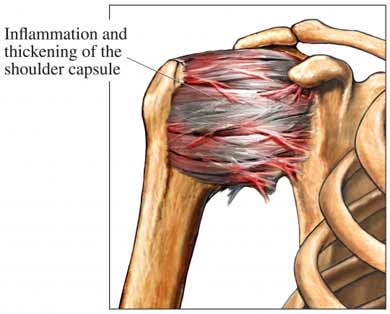分享:
这篇文章对您有帮助吗?
分享:
这篇文章对您有帮助吗?
Madam S is a 50-year-old government servant who came to see me about a year ago with a complaint of right shoulder pain for 3 months’ duration. The pain started as vague discomfort in her shoulder whenever she does overhead activities such as wiping her house windows, combing her hair or hanging clothes at home. She also has pain in the shoulder whenever she lies on the affected shoulder at night.
Lately, she thinks that the pain had gotten worse as she also started to have pain even on slight movement in her shoulder while doing her administrative work at the office. She found it difficult to button her bra and also to clean her back while bathing.
Madam S was diagnosed to have diabetes mellitus 3 years ago when routine blood checks revealed that she had elevated fasting blood glucose. She has quite a strong family history of diabetes, with her late father and two brothers were diagnosed to have diabetes.
Examination of her shoulder revealed subtle reduction in movement in her shoulder especially when she was asked to touch her back. Otherwise the examination was unremarkable.
Her X-rays were normal.
“What’s wrong with my shoulder Doc?” she asked with a rather concerned face. “Does this condition have something to do with my diabetes? Is it an infection Doc?”
This lady was suffering from ‘frozen shoulder’ – a condition caused by inflammatory shrinking and thickening in the shoulder capsular tissue (the encasing tissue of the shoulder joint). The inflammation causes the shoulder to become increasingly painful, and, with time, the shoulder becomes stiff and it will be quite difficult to move the affected shoulder in almost all directions.

The causes of frozen shoulder are:
Frozen shoulder has three stages – these stages tend to overlap and could take as long as two years to resolve even with proper treatment.
Stage I – ‘freezing stage’, characterized by increasing pain in the shoulder with movement; however shoulder motion is only mildly affected. This stage lasts from 2 to 4 months.
Stage II – ‘frozen stage’. As the name denotes, the main feature of this stage is stiffness of the shoulder, pain is slowly improving despite worsening in stiffness. The first movement to be affected is inward movement of the arm (for example – difficulty in scratching one’s back or strapping the bra) however in advanced stage II all movements are restricted. Duration – 4 months to 1 year.
Stage III – ‘thawing stage’. Pain is completely alleviated and stiffness improves during this final stage. This stage takes a year or longer to complete.
分享:
这篇文章对您有帮助吗?
分享:
这篇文章对您有帮助吗?